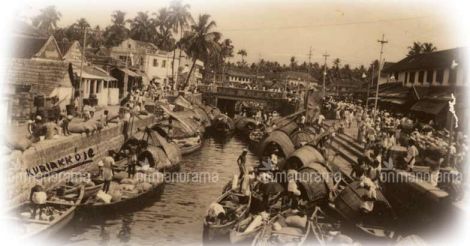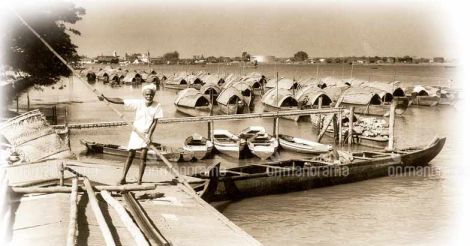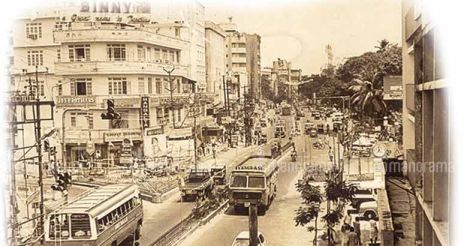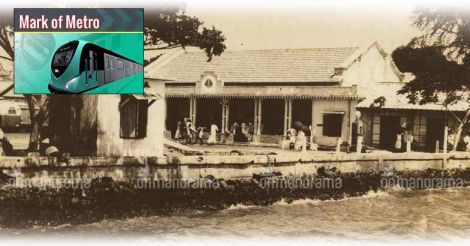Kochi has come a long way since the times when a fleet of dhows lined its backwater entrance with cargoes as varied as rice and spices. A night-life scene from half a century ago would show the boats carrying loads of commodities and weary rowers eager to make landfall. Even Arab, Greek and Chinese traders frequented the marketplaces of Ernakulam and Mattancherry.
The trading town of yesteryear has been transformed beyond recognition. Kochi has turned Greater Kochi, taking in even distant lands such as Aluva and Paravoor and the islands dotting the coastline.
Kochi was a small town in the nascent years of Kerala. The state’s big towns were Thiruvananthapuram, Alappuzha and Kozhikode. The abandoned mass of wetlands and fishing villages has grown over the years to contribute 60 percent of the state’s revenue. Kochi is today one of the fastest growing cities in India.
Kochi, or Ernakulam in local parlance, owes its phenomenal growth to the development of the Venduruthi island into a modern port. The trading prowess of Mattancherry slowly shifted to the eastern shores of the lake with the development of the port.
Check our special site here | Kochi Metro: chugging along with time
Kochi Metro inauguration: PM Modi to take the first ride
Kochi is on the move, with the addition of wider highways, bridges, railway lines, flyovers and an airport. The latest milestone on that growth story is Kochi Metro, which starts services on Saturday.
We flip the pages of Kochi’s history to trace its development from a modest town with a couple of roads filled with a horde of bicycles, cycle rickshaws and a handful of cars.
Road to progress
 Shanmugham road lining the Kochi Lake
Shanmugham road lining the Kochi LakeThe Shanmugham Road lining the Kochi Lake was the first road to be asphalted in Ernakulam. The princely state of Kochi spent Rs 60,000 on the infrastructure project. The Marine Drive was yet to come up and the Banerjee Road was not even an idea. A canal stretched between the Kerala High Court and Palarivattom. A vast collection of paddy fields marked the area that was to become the arterial Mahatma Gandhi Road.
There were no bridges and hardly any vehicles. People went on foot on the narrow mud paths while the royal family relied on the mud bund that connected Tripunithura to the SRV School and Maharaja’s College in Ernakulam. The Edappally canal was built for the royal family members to visit the temple.
Kochi Metro- In-depth coverage
In 1913, the Kochi state laid a stone-paved road from Ernakulam to Thrissur at a cost of Rs 80,000.
The MG Road came up years later. The erstwhile Thiru-Kochi’s public works minister, Sahodaran Ayyappan, had to do a lot of explaining before he could convince skeptics about the necessity of a 70-foot road. Kochi hardly had the vehicles to fill such a road then.
Sailing to tomorrow

Kochi had a unique transport system as demanded by the islands dotting the vast backwater. Travelers relied on the cargo boats to get around. Dhows as a means of transport later gave way to the mechanized boats.
The Boat Jetty has become a landmark of the city and for good reason. This was the gateway to the city for most part of its life. The Kerala State Road Transport Corporation originally chose the area to build its bus station on November 1, 1968. Boats have become almost redundant with the construction of bridges connecting the islands. The proposed Water Metro may be the redemption for the water transport in Kochi.
Anchoring growth
The Kochi port was the accidental byproduct of a flood in the River Periyar. The natural port that had served only small ships was transformed into a modern port by Sir Robert Bristow. The British port engineer landed in Kochi on April 13, 1920. He crisscrossed the Kochi Lake on a small boat named ‘Dorothy’, sprinkling sawdust into different parts of the vast water body that connected to the estuary. The colored trail helped him understand the currents.
Bristow moved the islands which hampered the current and reclaimed land wherever he deemed fit. He dredged the estuary to form a shipping channel. His plans enhanced the natural benefits of the tiny Venduruthi Island, which he transformed into the Wellingdon Island. The 800-acre reclaimed land now houses the Kochi Port.
Two bridges connected the island to the mainland in the east and Mattancherry in the west. The port changed with the times. Big ships from around the world came calling. Most of the action has now shifted to the International Transshipment Container Terminal at Vallarpadom across the lake.
Bridging divides
 Kochi city
Kochi cityThe many islands of Kochi are now connected by a series of bridges. The Marthanda Varma Bridge and the Mangalappuzha Bridge at Aluva connected Ernakulam to the north, while the Edakochi Bridge paved the way to the south. The Chambakkara Bridge made the eastern areas accessible.
More audacious plans followed, including a highway from Aroor to Edappally via Vyttila which bypassed the city with a series of five bridges. The famed Chittoor ferry service breathed its last with the construction of the Varappuzha Bridge.
The most revolutionary of all the bridges was the chain of bridges that connected the islands of Mulavukad (Bolghatty), Vallarpadom and Vypeen to the mainland. Kochi also boasts of the longest railway bridge in India. Almost all railway gates have been replaced by flyovers and all islands are connected by bridges.
Development on track
The Shoranur-Ernakulam rail line bestowed on Ernakulam the status of the nerve center of Kerala. The track is a testimony to a visionary king who wanted to lift his realm from the backwaters. The Kochi King was not disappointed when the British rejected his request to extend the Madras-Shoranur rail line to Ernakulam. He raised the money for the line as demanded by the British, even selling the caparisons kept in the Tripunithura Poornathrayeesa Temple and ornaments in other temples.
Work on the track started in 1899. The first goods train reached the railway station (now Old Railway Station) behind the high court on June 2, 1902. The first passenger train reached Kochi on July 16. The line was converted to broad gauge in 1935 and a second line was added later. The track crossed the lake to the port in 1940, increasing the traffic to the port dramatically.
Ernakulam would soon be connected to Kottayam and Alappuzha through rail lines. The first railway station and the harbor terminus are now historical relics. Their places have been taken over by the Ernakulam Town (North) and Ernakulam Junction (South) railway stations.
Taking off
Kochi looked towards the skies when the Royal Dakota aircraft of the Royal Air Force touched the runway on the Wellingdon Island with a rumble. The island was to house a naval airport, too. The airport that started in 1943 placed Kochi on the global aviation map.
Many years later, fed up with the clogged roads that led to the airport and a lack of space that kept away larger aircraft, Kochi built its own international airport at Nedumbassery near Angamaly. The airport presented a new model with expatriates loosening their purse strings to realize the project. The government’s liability was limited in the public-private partnership model. The foundation stone of the airport was laid in 1994 and the first aircraft landed in 1999. Gone were the days when passengers from Kerala had to fly on small planes to Chennai or Bengaluru before boarding bigger aircraft to their destinations. Kochi is directly connected to almost all countries in the world.
Riding to future
People who questioned Sahodaran Ayyappan’s plans for a 70-foot road belong to the Jurassic age. Even a 700-foot road is not enough to handle Kochi’s maddening traffic. The chock-a-block scene may be eased with the new kid on the block - metro.
The faster overhead rail is expected to take a large part of the load from the city roads. If more people get on the metro, leaving their vehicles at home, metro may mark the beginning of a new phase in the life of Kochi. Public transport has come of age in the city.

























 Boat Jetty in Kochi
Boat Jetty in Kochi